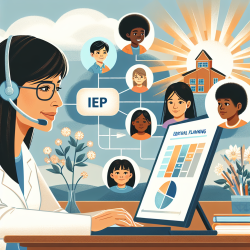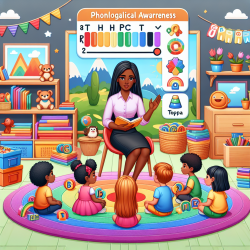Individualized Education Program (IEP) planning and meetings are pivotal in ensuring that students with special needs receive the tailored support they require. As school social workers, your role in this process is indispensable. The advent of telepractice has revolutionized how these services can be delivered, providing a flexible and efficient approach to meeting the needs of our students.
In this blog, we will explore how telepractice can enhance IEP planning and meetings, and offer actionable strategies to make the most of this technology.
Understanding Telepractice in IEP Planning
Telepractice, or the provision of therapy services through online platforms, has gained significant traction in recent years. For school social workers, this method offers several advantages:
- Accessibility: Telepractice allows for seamless communication between all IEP team members, regardless of their physical location. This ensures that everyone can participate actively in the planning process.
- Flexibility: Scheduling meetings and therapy sessions becomes more manageable, accommodating the varied schedules of educators, parents, and therapists.
- Efficiency: Digital tools and platforms streamline the documentation and sharing of IEP-related information, making it easier to track progress and make necessary adjustments.
Best Practices for Using Telepractice in IEP Meetings
To maximize the benefits of telepractice in IEP planning and meetings, consider the following best practices:
- Prepare Thoroughly: Ensure that all necessary documents and reports are accessible online before the meeting. This preparation helps keep the meeting focused and efficient.
- Engage All Participants: Use interactive features such as screen sharing and digital whiteboards to involve all team members in the discussion. This fosters a collaborative environment.
- Ensure Privacy and Security: Choose telepractice platforms that comply with privacy laws such as FERPA and HIPAA. This ensures that all student information is kept confidential.
- Follow Up: After the meeting, send a summary of the discussion and agreed-upon actions to all participants. This helps keep everyone on the same page and ensures accountability.
Case Study: Successful IEP Planning with Telepractice
Consider the case of a school district that implemented telepractice for IEP meetings. Initially, there were concerns about the effectiveness of virtual meetings. However, by following the best practices outlined above, the district saw several positive outcomes:
- Increased participation from parents who previously had difficulty attending in-person meetings.
- Improved collaboration among IEP team members, leading to more comprehensive and effective plans for students.
- Greater flexibility in scheduling, reducing delays in the IEP process.
This case study illustrates the potential of telepractice to enhance the IEP planning process, making it more inclusive and efficient.
Taking the Next Step
As a school social worker, embracing telepractice can significantly improve your ability to support students with special needs. By leveraging the advantages of online therapy services, you can ensure that IEP meetings are more accessible, flexible, and efficient.
At TinyEYE, we are committed to providing high-quality online therapy services that support your efforts in IEP planning. Our platform is designed to facilitate seamless communication and collaboration among IEP team members, ensuring that every student receives the support they need.
To learn more about how TinyEYE can assist you in optimizing your IEP planning process, visit our website or contact us for a consultation.
Take the next step in enhancing your IEP meetings with telepractice today. Together, we can make a significant difference in the lives of our students.










